10 Layered Lighting Techniques for a Perfectly Lit Living Room
Lighting is more than just a way to see—it’s a design element that shapes mood, enhances decor, and defines how your living room feels at different times of the day. A well-designed living room doesn’t rely on a single overhead bulb; instead, it uses layered lighting, a mix of different sources that work together for flexibility, function, and ambiance.
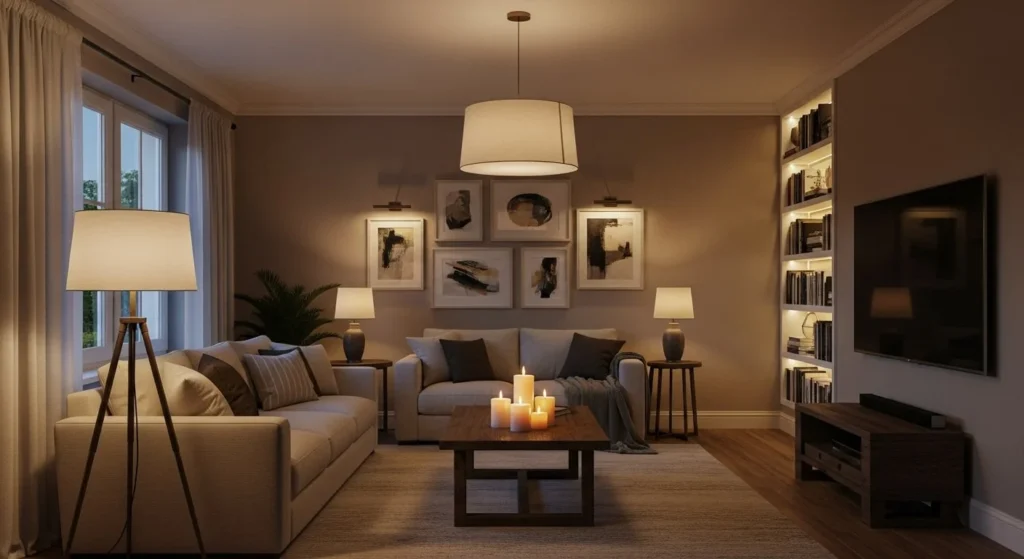
Below are 10 layered lighting techniques—from foundational to creative—so you can achieve a living room that feels both functional and inviting.
1) Ambient Lighting: The Foundation
What it is: General lighting that fills the room with an even glow.
How to do it:
- Use ceiling-mounted fixtures, recessed lighting, or a large central pendant.
- Opt for warm white bulbs (2700K–3000K) to keep the space cozy.
- For low ceilings, flush mounts work best; for higher ceilings, try chandeliers or multi-arm pendants.
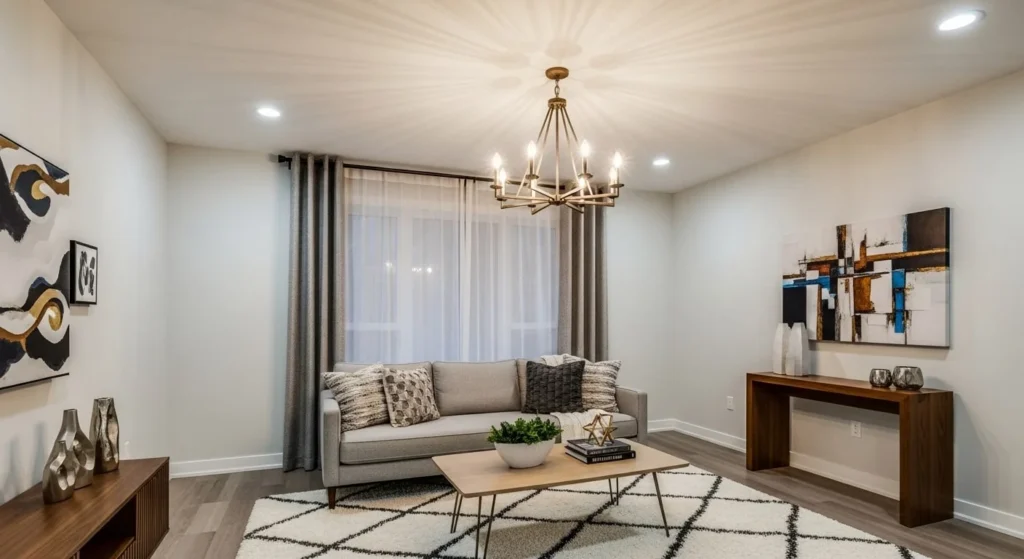
Pro Tip: Put ambient lighting on dimmers to instantly switch from “daytime bright” to “evening cozy.”
2) Task Lighting for Activities
What it is: Focused lighting for activities like reading, working, or knitting.
How to do it:
- Place an adjustable floor lamp beside a sofa or reading chair.
- Add swing-arm wall sconces over side tables.
- Use directional desk-style lamps on console tables for function with style.
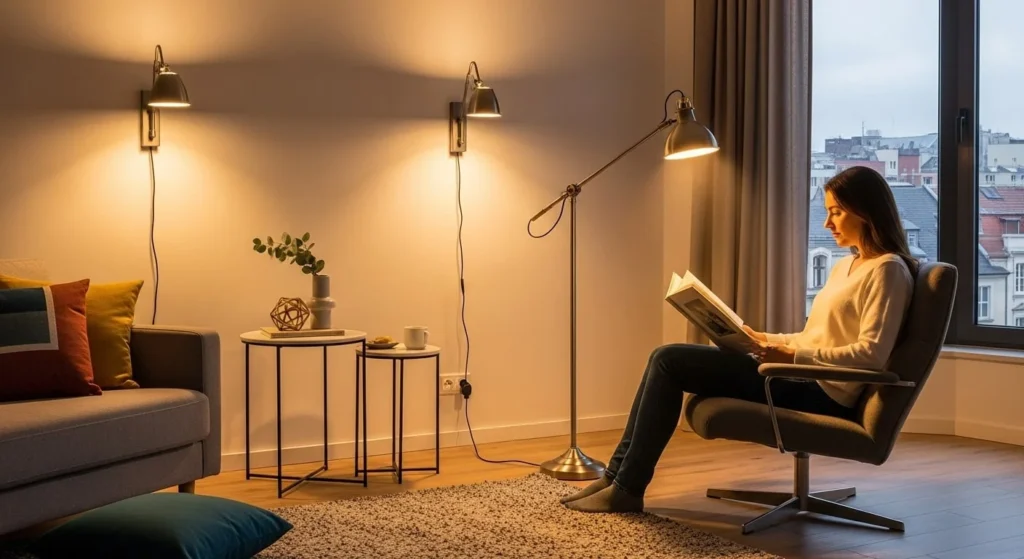
Pro Tip: Choose bulbs with higher lumens (or slightly cooler tones) for reading clarity without straining eyes.
3) Accent Lighting to Highlight Decor
What it is: Lighting that emphasizes architectural details, artwork, or display areas.
How to do it:
- Install wall-mounted picture lights above framed art.
- Use LED strip lights inside shelving to spotlight objects.
- Angle recessed spotlights at textured walls, fireplaces, or sculptures.
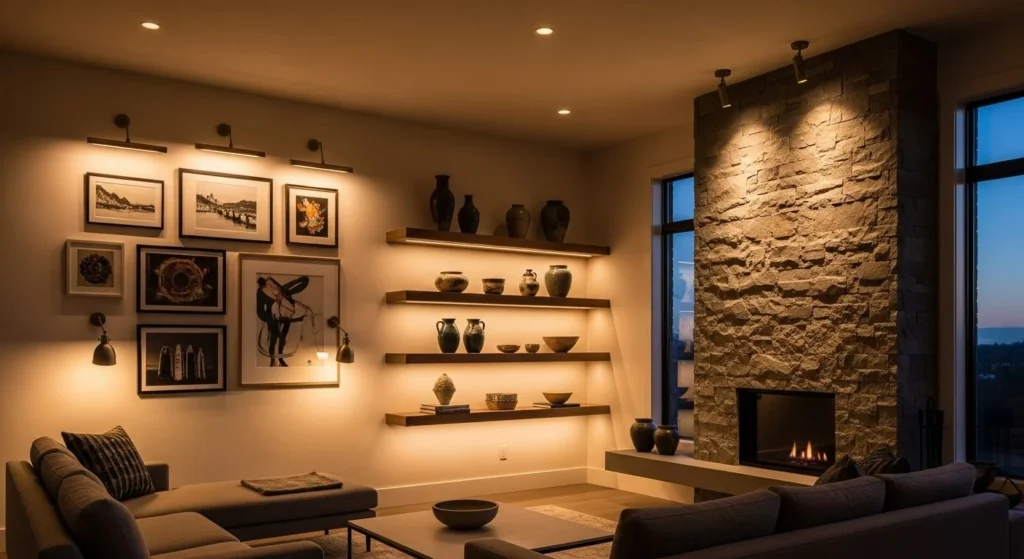
Pro Tip: Accent lighting should be 3x brighter than the ambient level to truly stand out.
4) Layered Floor Lamps for Flexibility
What it is: Freestanding lamps that can provide ambient, task, or accent lighting depending on design.
How to do it:
- Use a tall arc lamp over the seating area as a sculptural statement.
- Place tripod floor lamps in empty corners to fill shadowy areas.
- Choose adjustable-height models for versatility.
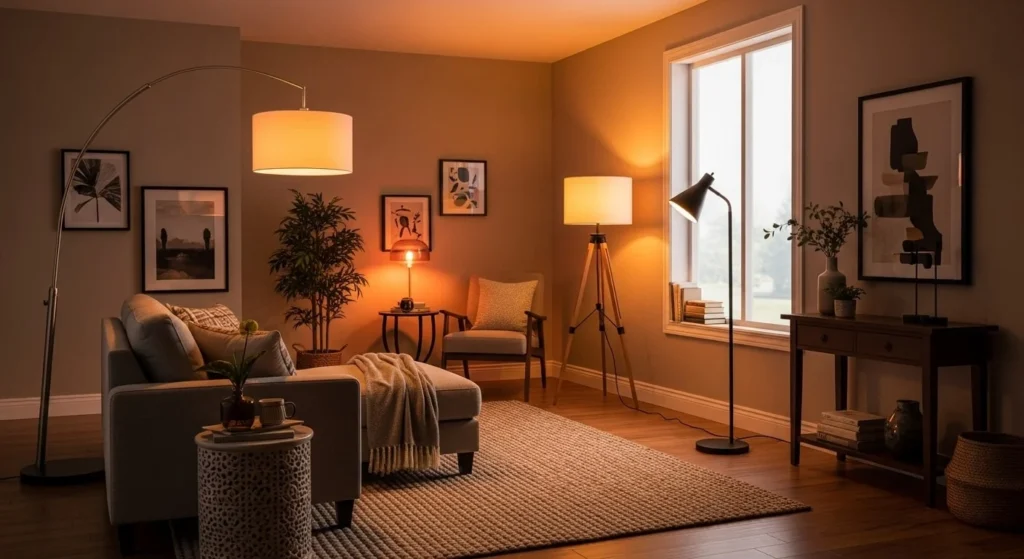
Pro Tip: Pair floor lamps with smart bulbs so you can change brightness and warmth with a voice command or app.
5) Table Lamps for Warmth and Balance
What it is: Portable lamps that soften corners and balance overhead light.
How to do it:
- Place matching lamps on either side of the sofa for symmetry.
- Use different heights for a layered effect (short ceramic base on one table, taller glass lamp on another).
- Add small-scale lamps on shelves for a cozy glow.

Pro Tip: Linen or paper lampshades diffuse light beautifully for a soft, welcoming effect.
6) Wall Sconces to Save Space
What it is: Wall-mounted fixtures that provide both style and function.
How to do it:
- Flank the sofa or fireplace with sconces to create symmetry.
- Install swing-arm sconces near seating for task lighting without side tables.
- Choose uplighting sconces to visually lift a small room.
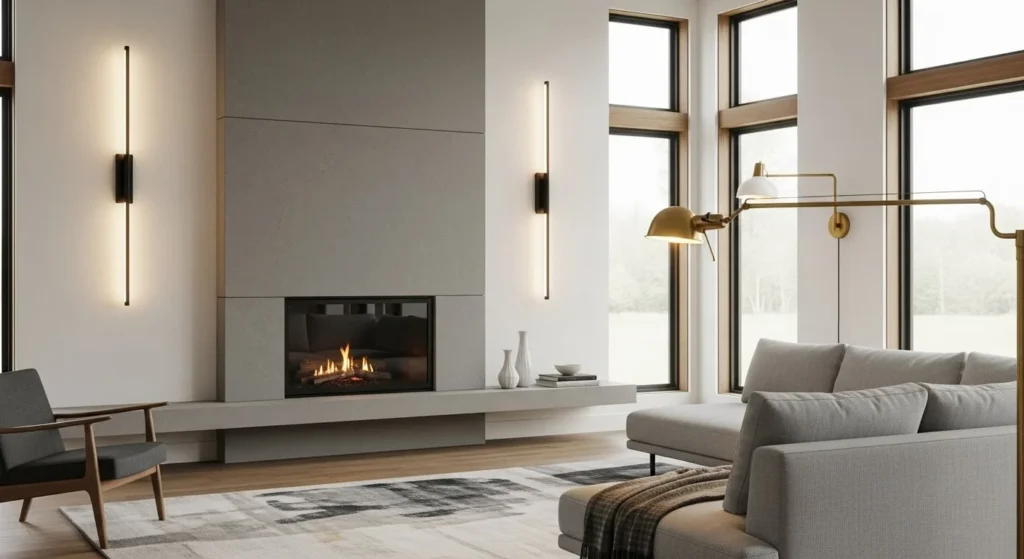
Pro Tip: Hardwired sconces look sleek, but plug-in options are renter-friendly.
7) Cove & Indirect Ceiling Lighting
What it is: Hidden light sources that bounce illumination off the ceiling or walls.
How to do it:
- Install LED strips in ceiling coves, crown molding, or recessed soffits.
- Choose warm dimmable LEDs for evening relaxation.
- Use indirect light to eliminate harsh shadows.
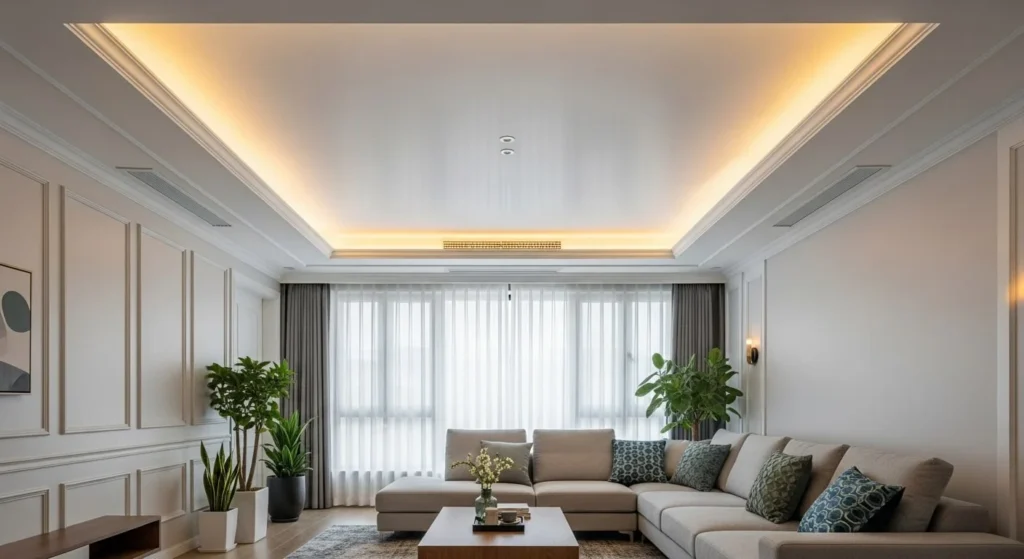
Pro Tip: Indirect lighting makes ceilings feel taller and rooms feel larger—ideal for apartments.
8) Dimmers & Smart Controls for Flexibility
What it is: Control systems that allow brightness adjustment or automation.
How to do it:
- Add dimmer switches for all major light sources.
- Use smart bulbs or plugs for app or voice control.
- Set scenes like “Movie Night,” “Reading,” or “Entertaining.”

Pro Tip: Keep one preset brighter for cleaning and maintenance tasks.
9) Decorative & Artistic Lighting
What it is: Fixtures that act as functional sculptures, doubling as art.
How to do it:
- Choose a chandelier with sculptural arms for a statement.
- Try pendant lights with frosted glass or organic shapes.
- Use artistic neon or LED sculptures as accent pieces.

Pro Tip: Make one artistic fixture the “hero” and keep other lights more minimal.
10) Candlelight & Natural Glow for Atmosphere
What it is: The most atmospheric (and overlooked) lighting layers.
How to do it:
- Place clusters of candles on coffee tables or mantels.
- Use flameless LED candles for safety.
- Maximize natural daylight with sheer curtains and reflective surfaces.
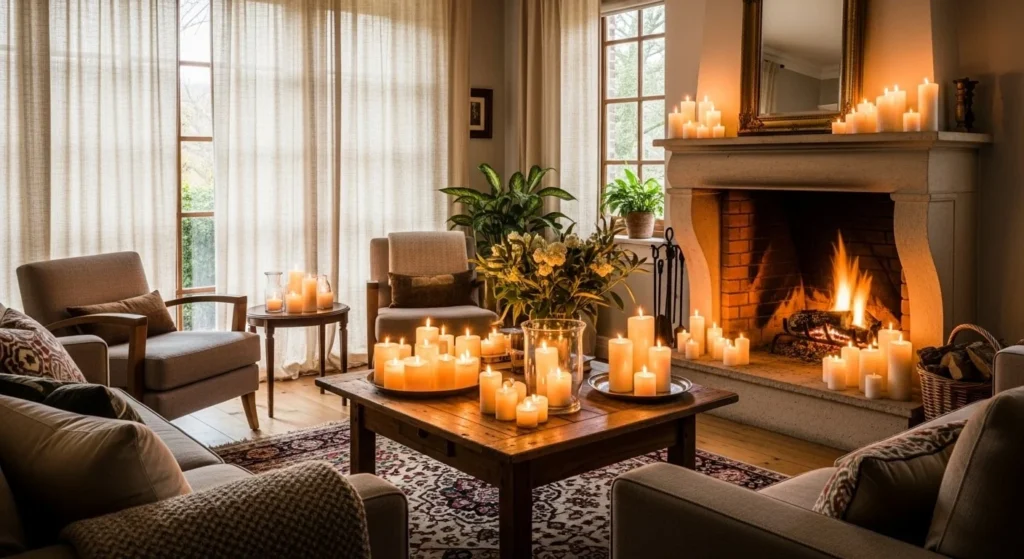
Pro Tip: Always mix natural and artificial light—daytime requires different layering than evening.
Quick Layering Formula (The 5-Point Rule)
A perfectly lit living room typically needs:
- Ambient: Overhead light or ceiling cove.
- Task: Floor or table lamps near seating.
- Accent: Picture lights, wall washers, or shelves.
- Decorative: Sculptural fixtures as art.
- Atmosphere: Candles or natural light.
When combined, these create depth, functionality, and mood control.
Final Thought
The secret to a beautifully lit living room isn’t about brightness—it’s about layers. Ambient sets the stage, task adds function, accent and decorative lights bring drama, and candles or natural light complete the mood. When used together, these 10 techniques give you a living room that adapts to every moment—whether it’s movie night, a quiet read, or lively entertaining.






